What Is Bhangra Dance?
If you visit Punjab during harvesting season, there’s a good chance that you will be able to witness a Bhangra dance performance. Bhangra is a traditional folk dance that’s a staple of the region’s culture. The dance itself has an incredibly rich history, not to mention the beautiful costumes, choreography, and music.
Down to explore this beautiful dance? This article can be your ultimate guide to it all!
What Is Bhangra Dance?
Bhangra dance is a traditional folk dance originating from Punjab. Particularly, the Sialkot region of Punjab.
It’s commonly performed by Punjabi farmers during harvesting season as they labor. They perform a bhangra move on the spot for every farming chore that they do. It’s a way for them to forget the exhaustion and tiredness, allowing them to finish the harvesting in a fun, pleasurable way.
Wheat crops in Northern India are often harvested during the Vaisakh season (usually on the 13th or the 14th of April). After the wheat is harvested and stowed away, the people here usually host many festivals to celebrate the bountiful harvests. Bhangra is often danced at these festivals to mark the success of the season and showcase their accomplishment.
These days, it’s no longer a dance that’s danced at festivals or special occasions. Instead, people are beginning to turn to bhangra as a form of high-energy workout or exercise.
Bhangra Dance History
Like most old traditional folk dances in the world, not much is known about the history of bhangra. According to a few academic pieces of research, bhangra has been speculated to have evolved from another Punjabi dance, called ‘Bagaa,’ a type of martial dance.
Bhangra itself came from the Sialkot district of Majha. Majha is a region at the center of the old Punjab area, now split in half between India and Pakistan. The Sialkot district of Majha has a very close tie with Jammu, a city in modern Punjab. As such, bhangra is considered to be a heritage of Jammu.
There are many forms of bhangra dances in the Punjab region. However, only the form of bhangra that’s danced in the Sialkot district is considered “standard”. In other places, like in Gurdaspur, India and Hoslapur, Punjab, the community form of bhangra is practiced.
The traditional form of bhangra is danced in a circle. Dancers will use traditional dance steps that have been around for centuries. Most moves will require the dancer to raise their arms or shoulders to the beat of the music (often played on the traditional dhol drum).
Bhangra began to evolve to catch up with the time in the 50s, when the free-form style of traditional bhangra began to grow in popularity. The change began when the Maharaja of Patiala – a royal – requested to see a performance of bhangra in 1953.
Free-form traditional bhangra is performed on stage. The performance is a mix between traditional bhangra moves as well as other Punjab dances, like Luddi, Dhamaal, Gham Luddi, and Jhummar.
Bhangra Costumes
During a bhangra performance, aside from the exotic choreography, you will also be able to enjoy the aesthetic of their traditional costumes. Dancers will wear vibrant, colorful costumes while they’re performing. This special dance costume is known as the vardiyaan.
But these colorful costumes are more than just a stage accessory to improve the aesthetic of the performance. Vardiyaan is designed to emphasize the wearer’s movements as well as improving the wearer’s range of motions.
There are many pieces to a vardiyaan ensemble. Men will typically wear a kurta, a vest, and a pahg. Meanwhile, women will wear a kurta, a vest, and a chunni.
For the bottom
For the lower half of their bodies, men will wear a chadr. Basically, it is a long, rectangular piece of unstitched cloth that the dancer will tie around their waist. The cloth is artfully tied so that it stays secured on the wearer’s body without restricting movement. It only covers the wearer down to the ankles.
The female analogue to the chadr is the salwar. The salwar is a loose-fitting pair of pants with pleats stitched in. The pleats are artfully stitched onto the salwar as a way to mimic the coverage and the visual effects of the chadr. But, unlike the chadr, the salwar is going to completely cover up the legs of the wearer.
While the pants are quite conservative, it doesn’t mean they’re difficult to move around in. A salwar is specifically designed to not interfere with the wearer’s movement. An experienced dancer can perform tricky maneuvers like high-knee and leg-lifting steps while wearing a salwar without much of an issue.
These days, there are plenty of female bhangra dancers opting for a chadr instead of a salwar, too.
For the top
Both men and women can wear a kurta. It is a long-sleeved, long-form tunic that can lengthen all the way down to the wearer’s knees or right above.
A sleeveless vest is often worn over the kurta.
Both of these pieces have very vibrant coloring and they’re often embroidered with a variety of eye-catching designs and patterns.
For the head
In Punjab, Sikh is the most popular religion. The pagh and chunni are headwears that reflect this. These headwears symbolize many great qualities, such as pride, humility, and respect.
Men wear a pagh, which consists of a very long stretch of cloth that is intricately wrapped around the top of the head. It is wrapped into a fan-like shape that’s known as turla.
Women will wear a chunni, which is a far lighter piece of cloth that is draped over the head. It is pinned to the kurta and vest. It is pretty much a scarf compared to the heavy turban that male dancers wear.
For accessories
Aside from the most basic components of a set of vardiyaan, there are many more pieces of accessories that a dancer can wear. They can wear jewelry to enhance different aspects of the performance.
For example, necklaces and earrings like the kainthe or the taveet can draw the audience’s attention to the dancer’s facial expressions (which plays a role just as important as the movements themselves in a performance).
On their wrists, they can also wear rumaalan, or handkerchiefs. These small pieces of cloth can do a wonderful job at highlighting the movements of the dancer’s hands and arms.
So, if you ever get the opportunity to watch a bhangra performance, pay close attention to their costumes. Every piece or garment or accessory that they wore is rich with history and traditions, as well as symbolism and purpose.
Bhangra Instruments
Bhangra is performed on top of traditional music, played on traditional instruments. Here are some key instruments that you will see being played by a band behind the performers.
Algozey
The algozey is a special instrument that looks like two wooden flutes fused together. Both flutes are played simultaneously by the musician. Each flute is held using three fingers. Its sound is described to be rhythmic (like a drum) rather than melodic.
Chimta
The chimta has the appearance of a pair of metal tongs. Each limb of the tongs has bells attached to it. When the tongs are stuck together, they create a nice chiming sound.
You can see a chimta being played as part of the band to provide background music for the dancers, or you can also see the musician partaking in the dance itself with other dancers while simultaneously playing.
Dhad
The dhad is a small drum that makes a high-pitched sound when struck. It’s a very distinctive instrument, having a body shaped like an hourglass.
The drum has two sides. Usually, the musician only strikes one side with one hand while the other hand works on a string in the middle. The string can manipulate the sound and pitch of the drum.
Dhol
Dhol is probably the most famous bhangra instrument. You will never find a bhangra performance that lacks the appearance of at least one dhol. It is basically a double-sided drum that’s beaten to the rhythm of the performance.
The player – called a dholi – plays the dhol in different beats to forge different segments of the performance, like Dhamaal or Jhummar.
Although the instrument is double-sided, not all sides are created equal. One side has a thicker membrane, which produces a deeper sound when struck. The other side will have a thinner membrane and produce a higher sound.
The dholi plays the instruments using two sticks. The side with thicker membrane and deeper sound, called the bass side, is played by a large stick called a dagga. On the other side with the thinner and higher-pitched membrane, the dholi uses a smaller and lighter stick called the tilli. Both sticks are either made from bamboo or wood.
Katos
Katos is an instrument that’s used by bhangra dancers themselves during a performance. This instrument is particularly special because it mimics the shape of a squirrel.
The basic structure consists of a long stick that is attached to a wooden block at the top. The wooden block has a flap that’s supposed to be the head of the squirrel and a tail. Both the head and tail portions are connected with strings.
When the dancer pulls the strings, the flap snaps up, which causes the ‘tail’ of the instrument to swing up. The dancer works the instrument by strumming the strings in time with the beat.
Khunda
Khunda is a bamboo stick that is waved and maneuvered around by bhangra dancers during a performance. The stick is long, heavy, and extensively decorated. It emphasizes the movements of the dancer and brings out the innate beauty of their moves.
Saaps (Shikke)
Saaps (also called shikke) are made from wood and has X-shaped parts which can expand and contract. The instrument is played using both hands.
When the X-shaped portions of the instrument come together, they produce a loud clapping sound that’s meant to resemble the clap of thunder.
Tumbi
The tumbi is a stringed instrument that’s often used to create accompanying rhythm for the dhol and the boliyan. It is a small instrument with a body shaped like a gourd to enhance acoustics. The tumbi only has one string.
Bhangra Music
As we mentioned earlier, bhangra is danced only to the tune of bhangra music.
Depending on the performance, the music can either be pre-recorded or played by a live bhangra band. But no matter what, you should be able to hear the sounds of different traditional Punjabi instruments in the music. We’ve mentioned briefly about the most popular kinds of instruments in bhangra music in the previous section, like the dhol drum and the tumbi one-stringed instrument.
Other than the presence of traditional instruments, there are a few more characteristics of bhangra music.
Sometimes, there are singers accompanying the dancers, too. The singers usually sing in Punjabi, with lyrics about positive, upbeat topics to match the joyous energy of the dance.
Even if you’re a westerner, the topics of the lyrics should be easily relatable: love, marriage, the pure joy of dancing, and the passionate pursuit of happiness. Pride in the country and the culture of Punjab are also topics that are frequently sung about during bhangra performances.
Compared to other Indian singing styles, bhangra music is sung with a high and impassioned voice rather than a thin, high tone. Lyrics are typically ad-libbed on the spot and made to evoke a call-and-response reaction from the listeners. Additionally, it’s not uncommon for singers to scat (sing non-sensical words to the music). They can sing things like “hi, hi, hi” or “oye hoi” to the beats of the music.
The end of a song is often marked by a drum roll from the band. Then, the singers are going to repeat the last phrase of the song together in a choir-like fashion.
Bhangra Dance Moves
If you’re interested in learning how to dance bhangra, the good news is that there’s no shortage of moves that you can try out.
All in all, there are over 300 different moves in bhangra. Some are traditionally performed by men, some are performed by women. Nevertheless, in the modern age where the lines between gender roles have greatly blurred, you can try anything!
Bhangra is usually danced in circles. The dancers usually move their arms and shoulders a lot during performances. Stunts can also be pulled, too. During one of the more professional performances, you’ll see heart-racing moves like a dancer climbing on top of another’s shoulders, while another dancer hangs onto their torso with their legs.
Most of the original dance moves are mimics of agricultural works, like plowing, sowing, and harvesting. The dancers are going to execute highly energetic moves like kicking in the air, jumping and twisting their bodies, sharply move their shoulders and hips, waving their arms and clapping their hands to the rhythm of the music.
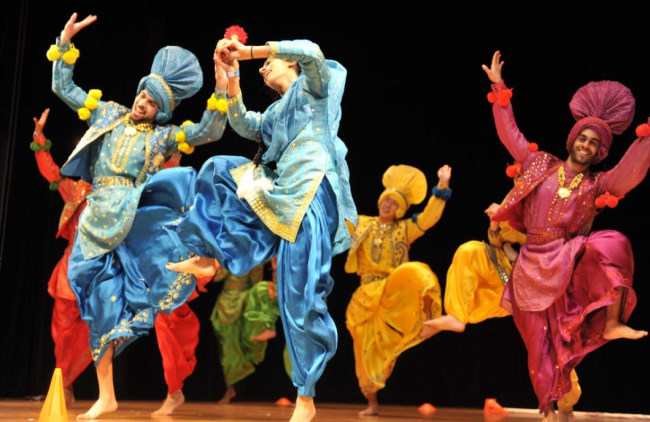
Accessories, like wooden swords and sticks (khunda), are occasionally used.
Aside from being a beautiful traditional folk dance, many people have adopted bhangra as a kind of high-intensity exercise. A single routine burns around 500 calories. Since a performance is often done with other people and in good fun, you won’t even notice the hours passing by!
As such, bhangra can be an excellent form of workout for people who don’t want to spend time working out by themselves alone in a gym. Bhangra can give you a sense of community, joy of working as part of a group, and improve your fitness to boot.
Types of Bhangra Dance
Bhangra really isn’t a singular kind of dance. It’s actually a mixture of many different dance forms and styles all around the Punjab region. Many of the folk dances that have been incorporated into bhangra can trace their roots all the way back to the 1800s. Good examples of these dances are Sammi, Luddi, Jhummar, Giddha, Sialkoti, and Dhamaal. Of course, there are many more.
- Sialkoti is a dance that originated from the Sialkot district of the Punjab region. It is typically performed with one leg in the air.
- Jhummar is a dance that came from the Jhang-Sial region. It is said to have a long history that dated back all the way to the Indo-Aryan era. A Jhummar routine includes a 16-beat cycle on the dhol drum.
- Sammi, meanwhile, is a folk dance that’s very popular in the Sandalbar region of Punjab. It is dedicated to a mythical girl. As such, most Sammi dance songs have a common refrain, which is: “Sammi Meri waar …” Sammi is also performed by women.
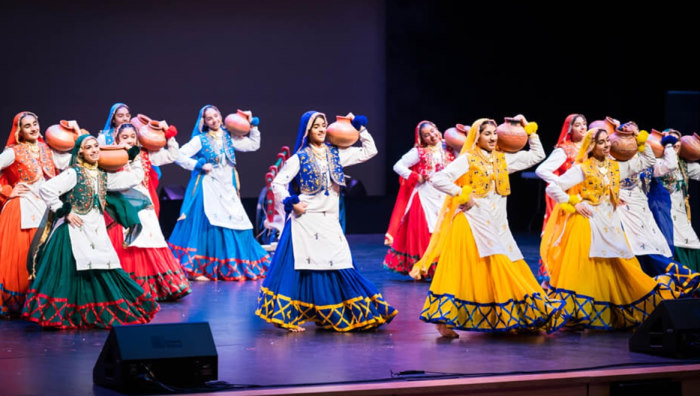
Due to improved communication between different communities in the Punjab region during the 1940s as independence movements grew, the methods and stories of each dance are shared. Eventually, certain communities adapt other folk dances in the region to their own local dances.
This is the reason why a bhangra performance is separated into segments, like a Jhummar segment or a Sammi segment. The following are some of the segments that you can see in a typical performance:
- Daan Kara: performed with sticks, often seen at weddings.
- Dhamal: a high-energy circle dance with a lot of twirling and shouting.
- Gatka: a martial dance with swords, daggers, or sticks.
- Giddha: a type of woman dance.
- Jhumar: a male dance at weddings with relatively low tempo.
- Julli: often danced solo and can be performed in a sitting position.
- Kikli: often danced in pairs of girl-girl or woman-woman. The dancers hands are usually interlocked as they dance.
- Luddi: the dancer keeps one hand tucked behind the back of their head, while their other hand is outstretched.
- Sammi: a form of woman dance.
Famous Bhangra Dancers
Malkit Singh
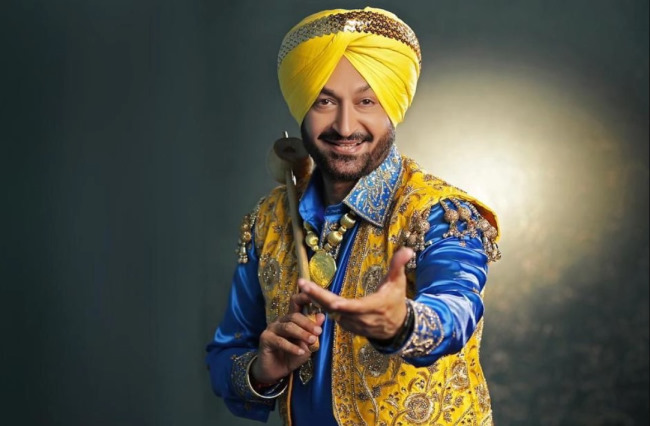
Malkit Singh is a Punjabi bhangra singer. Malkit was born in Hussainpur and was raised in Nakodar in Punjab.
In 1984, he moved to Birmingham, Britain. He produced excellent music from out of his studio in Birmingham. The records are so excellent that Malkit became the first Punjabi bhangra singer to be bestowed the MBE (Most Excellent Order of the British Empire) by Queen Elizabeth II at Buckingham Palace.
Malkit has many notable records in his discography, like “Gur Nalo Ishq Mitha” and “Tootak Tootak Tootiyan”, “Chal Hun”, and “Jind Mahi”. The two latter songs were featured in the movie “Bend It Like Beckham”.
Gurdeep Pandher
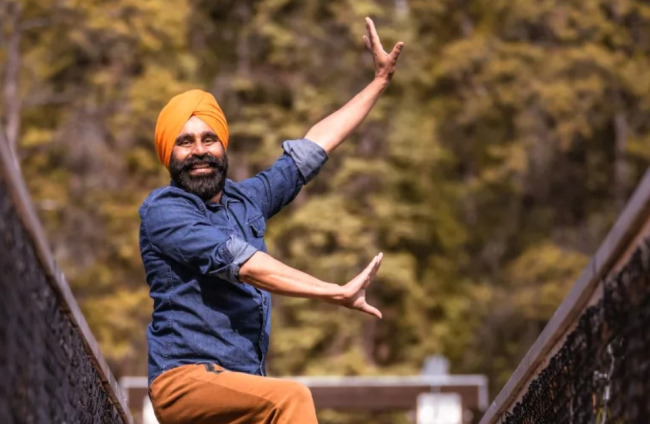
Gurdeep Pandher is a Sikh-Canadian author, teacher, and performer who specializes in producing dance videos. He considers his life calling to be the bridge between different cultures and a promoter of positive race-relations.
Gurdeep uses dancing as a way to break down barriers that people of color face in the west. He blends traditional bhangra with other dance forms in Canada, resulting in a very unique dance style. For example, he was the one who created the Can-Can and Bhangra dance fusion.
His most popular video – a bhangra performance on a frozen lake – has been watched by millions of people worldwide.
Manpreet Toor
Manpreet Kaur Toor is a Punjabi dancer and social media personality who’s known for her contents about Bollywood and bhangra dance videos. Her YouTube channel now has more than 1.2 millions subscribers and Manpreet has starred in many popular Punjabi music videos, like Summer Luv, Tera Nakhra, and Nachna Ni Ohnda.
She has been dancing ever since she was a child. Manpreet received her passion for Bollywood and traditional Indian dances from her mother, who is a huge fan of Bollywood songs.
Bhangra Competitions
These days, bhangra are no longer small-scale communal affairs. There are big, professional-level competitions that are hosted not just in the Punjab area, but all over the world. These competitions showcase the vibrant culture of Punjab and its people, as well as bringing the joy and energy of the dance to everyone, everywhere.
Bhangra dance competitions are a relatively new phenomenon, having only started in the 1960s. Local colleges formed bhangra dance crews and sent them to participate in local or national dance competitions. Some of the most famous early bhangra dance crews were from DAV College (Jalandhar) and Khalsa College (Amritsar).
Since the 1960s, bhangra dance competitions not only didn’t fade from the public, they even grew in popularity. Today, there are competitions not just in Punjab, but also in Australia, UK, and the US.
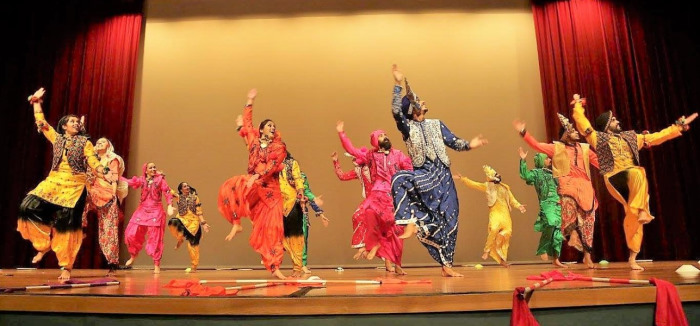
The earliest bhangra dance competitions were performed on top of live bhangra music. The band almost always consists of a singer and a dholi (dhol player). Each team typically has 8 dancers. In the modern age, pre-recorded music has become a lot more prevalent. In fact, most international bhangra competitions are judged based on how each team would dance to the same pre-recorded song. The better a team adapts, the more scores they would get.
Bhangra dance competitions for children have also begun to grow in popularity. They allow children to learn more about Punjab’s culture, while also being a source of entertainment, fitness, and a way to interact with others.
Check more: Ultimate info about Dabke Dance
Bhangra Dance Academy
- Two Step Bhangra Academy
- NYC Bhangra
- Vasda Punjab Bhangra Academy
- G9 Bhangra Academy
- Royal Academy of Punjab
- Nachdi Jawani: Melanie
Bhangra Dance Image
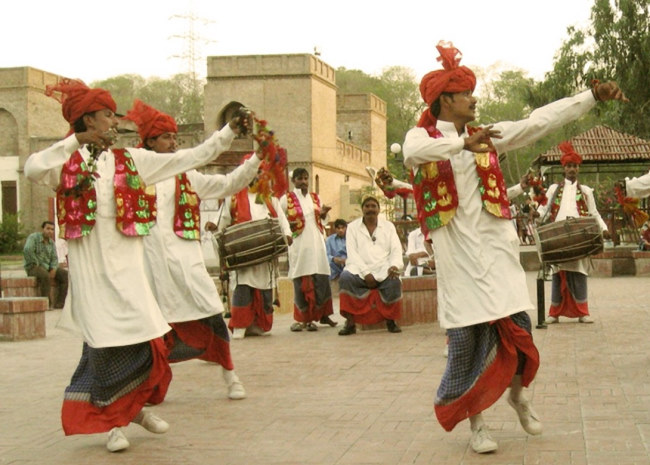
Bhangra Dance Video
FAQs
1. Which City Is Known As the City of Bhangra?
The “City of Bhangra” is the unofficial name of the place where traditional bhangra hailed from: the Sialkot district of Punjab.
2. Is Bhangra a Classical Dance?
Classical dances emphasize grace and smoothness from the dancer. Meanwhile, folk dances are more energetic and stronger in the movements. As such, bhangra is more of a folk dance than a classical dance.
3. What Is the Difference Between Bhangra and Bollywood?
Bhangra and Bollywood dances are different not just in the area that they’re performed, but also in the music and characteristics. Bhangra is a folk dance that’s mostly performed in the Punjab region using traditional instruments. Bollywood dances are a blend of folk and classical Indian dances as well as Western dances.
4. What Is the Main String Instrument Used in Bhangra?
There is really no ‘main’ string instrument in bhangra. The only instrument that’s most commonly associated with this dance is the dhol drum. In the stringed section, a bhangra band can use a variety of instruments, like guitar (acoustic and electrical), bass, sitar, violin, and sarangi.
Final Words
Bhangra is a beautiful folk dance that encompasses the energy and liveliness of the people of Punjab. If you’re ever offered the opportunity to visit the place or simply watch a bhangra dance performance anywhere it’s performed, go!
I’m sure that it’s an experience that you won’t ever forget.
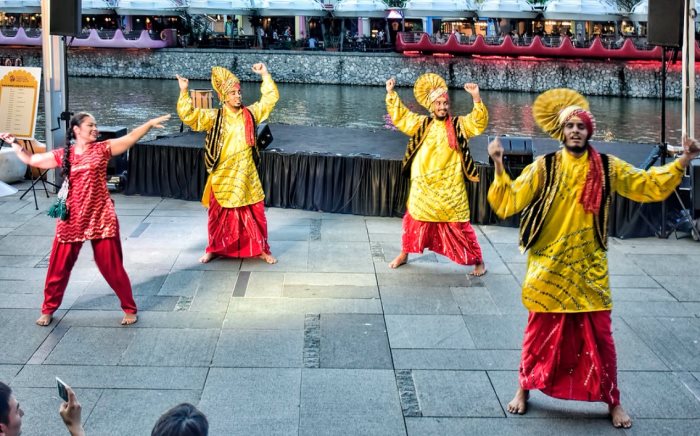

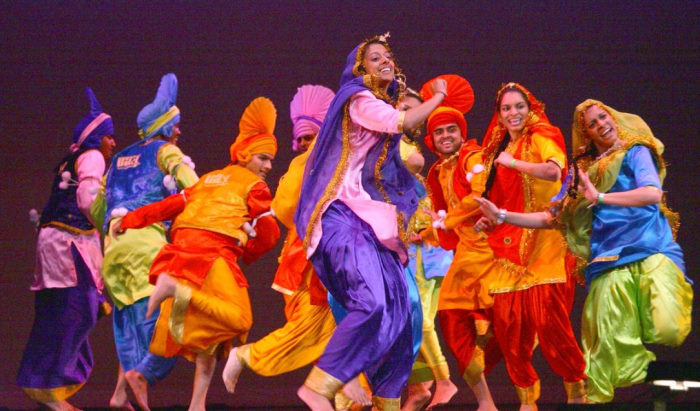
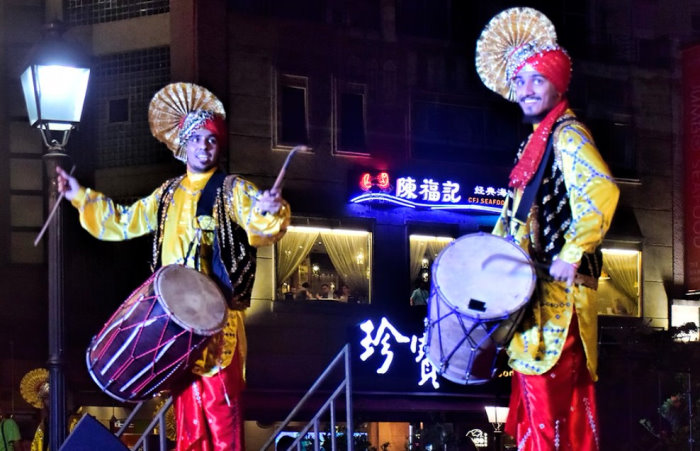

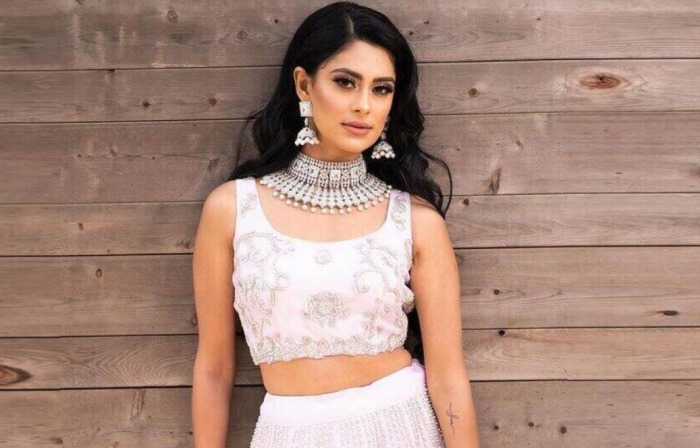
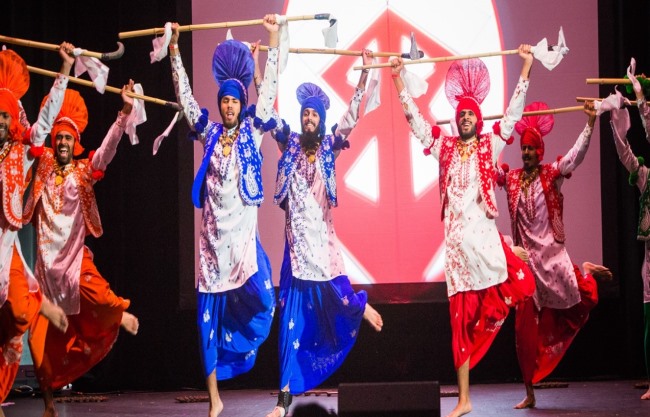


Nhận xét
Đăng nhận xét